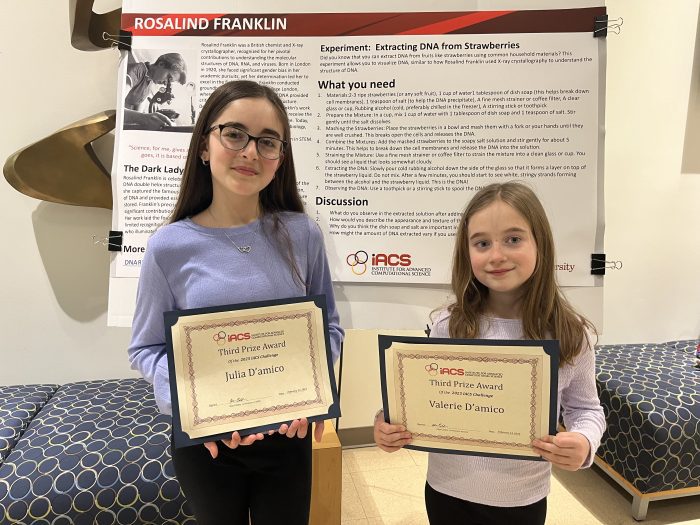Relocate the PJ country club, stop the project
I appreciated Lynn Hallarman’s February 6 article, “Report finds no maintenance or repairs carried out on Port Jeff East Beach Bluff project”. It provides a great recap of how the village got to where we are in relation to the Bluff/Country Club.
Near the end of the article, we learn that the Mayor said, in a written email to the paper, that an open forum will be held where GEI will present the Phase 2 project design and path forward for Phase 1 remediation and restoration. “
It appears to me that this presentation will not provide options for residents to consider or gather input on how the residents would like to move forward but, instead, it will tell us what’s going to happen and how much we will pay via our property taxes.
I believe that this will not be the end of this nightmare. There will be other multi-million dollar work that needs to be done after Phase II is completed. This includes millions for a drainage system to prevent more damage to the campus, the restoration of Phase I project that partially failed, ongoing expensive upkeep including DEC-required yearly inspections, and a grandiose plan for a future sports complex (tennis courts, pickleball courts and more). When will the spending stop? Enough is enough and remember this is just a temporary fix. Nature will eventually win. All we will accomplish is postponing the inevitable and pushing the problem into the future.
We need to remember that the main purpose of this project was to protect the Country Club building from falling off the cliff since it provides a major income to the Village. Yet, I hear that the current tenant has not paid their rent in months. Maybe this is a sign that we need to stop, retreat and build a new smaller facility in a safer location that would serve not only this generation but future generations.
Robert Grimm,
Port Jefferson Village
BESS facilities are inefficient
In battery energy storage systems (BESS) fabricated using lithium-ion storage cells, the possibility of an uncontrollable thermal runaway fire, such as the recent event in Moss Landing, California, is a serious problem. However, there is another problem, which may cause even greater concern. This is the possibility of prolonged blackouts, due to an insufficient number of BESS installations, brought about by the occurrence of several consecutive days of overcast weather, during which little or no solar energy will be provided by the sun.
We have been told that climate change is an existential problem, and that all emissions of carbon dioxide must be eliminated. One apparent solution, which is apparently under serious consideration, would be to replace our existing power plants with solar arrays, with BESS installations to be charged with energy when sunlight is available, and will then provide power to the grid during times when the sun’s rays are not present, such as at night or during periods of overcast skies. This raises the question: in the worst case, how much energy must be stored, and how many BESS units will be required to make this energy available to prevent a blackout?
The reported annual electrical energy consumption for Suffolk County is approximately 10,800,000 MWh/year, or 1233 MWh/hour. A large BESS facility can provide 1400 MWh, from a full charge. This is the energy required by Suffolk County for 1.135 hours. During a normal winter day, let us assume that we have 8 hours of sunlight to charge the batteries, followed by 16 hours of darkness. Thus, under ideal conditions, each 16-hour period would require the stored energy of 14 fully charged BESS stations. Now let us consider the effect of one or more overcast days, during which we would lose the ability to charge the BESS batteries on those days. In this case, for one lost day, the fully charged batteries would need to provide power for 16 + 24 hours, or 40 hours. This would require a total of 35 BESS stations, an increase of 21 stations. In a similar manner, for each additional consecutive day lost, an additional 21 stations will be required, if we are to avoid a blackout, with no electrical power. For example, to maintain power with 2 overcast days, we will need 35 + 21 = 56 BESS stations For 3 days, 77 stations will be required. And so on.
These projections are based on our present level of energy usage, which is a mere 10,800,000 MWh/year. If recent predictions are to be believed, this may be a precursor to very large increases in the near future. These will be due to AI memory storage requirements, widespread (possibly mandatory) use of EV’s, electrification of the LIRR (as championed by the prolific Larry Penner) and alternative methodologies for home cooking and heating, to name but a few.
Should these applications eventuate, we will, of course, need to increase the number of BESS installations accordingly.
George Altemose
Setauket
Cancer prevention month
February is National Cancer Prevention Month. Did you know that almost half of all cancer cases are preventable? The Cancer Prevention in Action program at Stony Brook Cancer Center wants to share how you can prevent cancer for yourself and your loved ones.
Vaccinate: The HPV (Human Papillomavirus) vaccine can reduce your child’s risk of six types of cancer later in life. HPV is a common virus, responsible for about 36,000 cancer cases annually in the U.S. These cancers include cervical, vaginal, vulvar, penile, anal, and oropharyngeal–cancers of the mouth and throat. The HPV vaccine can prevent 90% of these cancers by preventing the virus that causes them. If your child is nine or older, talk to your child’s healthcare provider to schedule. For those who were not vaccinated in childhood, you can still get your HPV vaccine through age 45. Talk to your healthcare provider about your vaccination needs, or get vaccinated at your local pharmacy if you are 18 or older.
Get screened: Cancers such as breast, cervical and colorectal cancers can be detected early through screening tests. These three cancers account for one out of four of all cancer deaths in New York State. Finding cancers early can save lives, as treatment is more likely to be successful. Some cancer screenings can even identify and remove pre-cancerous cells before they develop into full-blown cancer. Examples of cancer screenings are mammograms, pap smears, fecal tests and colonoscopies. Talk to your healthcare provider about what screenings are recommended for your age and risk factors, and how often you should be screened.
Sun safely: Skin cancer is the most common form of cancer in the United States. Overexposure to ultraviolet radiation from the sun and indoor tanning beds is the primary cause of all skin cancers. The use of indoor tanning beds has been linked to increased rates of melanoma, the deadliest form of skin cancer, and should be avoided. Protecting your skin from the sun when outdoors, even in the winter months, can also help reduce your skin cancer risk. Precautions to take include wearing sunscreen daily, reapplying every two hours when outdoors, covering up with wide-brimmed hats, UV sunglasses, long-sleeved clothing, and seeking shade, especially during the midday sun are all proven ways to reduce risks.
Live healthy: Having a healthy lifestyle is a way to lower your cancer risk. Quitting smoking and vaping, reducing alcohol intake, maintaining a healthy body weight, and staying physically active are all forms of cancer prevention. Health coverage enrollment has also been shown to reduce cancer risk by improving your access to preventive care.
In New York State, nearly one in four deaths is due to cancer. The CPiA program at Stony Brook Cancer Center is working to change this by educating the community on cancer prevention, mobilizing communities to take action against cancer, and supporting local organizations, businesses, and municipalities to implement policies that prevent cancer.
The best time to take action against cancer is before it starts.
To learn more cancer prevention or to get involved with CPiA at Stony Brook Cancer Center, go to www.takeactionagainstcancer.com or contact us at 631-444-4263 or at [email protected].
CPiA is supported with funds from Health Research, Inc. and New York State.
Annalea Trask, Program Coordinator, Cancer Prevention In Action
Stony Brook Cancer Center
















